"La Sagrada Familia" One of the most incredible and beautiful architectural works in the world
Origins
The origins of the Expiatory Temple of the Sagrada Familia date back to 1866, the year in which Josep Maria Bocabella i Verdaguer founded the Spiritual Association of Devotees of San José, which from the year 1874 promotes the construction of an expiatory temple dedicated to the Holy Family . In 1881, and thanks to several donations, the Association purchased a plot of land of 12,800m² between the streets of Marina, Provença, Sardenya and Mallorca to build the temple.
The first stone was placed on March 19, 1882, the feast of San José, in a solemn ceremony presided over by the bishop of the city, Josep Urquinaona. From then on, construction begins, starting with the crypt located under the apse according to a Neo-Gothic design by the architect Francisco de Paula del Villar y Lozano, the first architect of the temple. This one, shortly after and by discrepancies with the promoters, leaves the direction of the work, and the order happens at the hands of Antoni Gaudí.
Antoni Gaudí
Apse
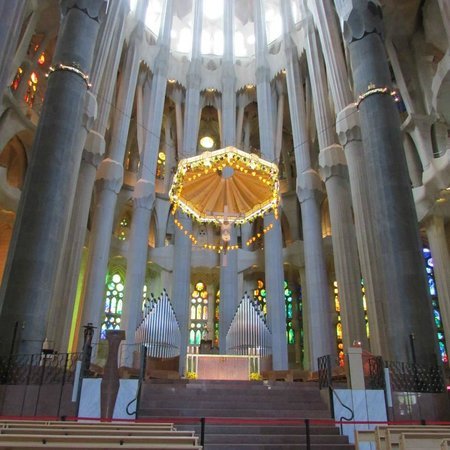
In 1892, he began the foundations for the facade of the Nativity because, according to Gaudí himself, "If instead of making this decorated, ornate and turgid façade had begun with the Passion, hard, bare and made of bones, people He would have distanced himself ». In 1894 the facade of the apse was finished and in 1899 the Portal de Rosario, one of the entrances to the Nacimiento cloister.
Portal of Rosario
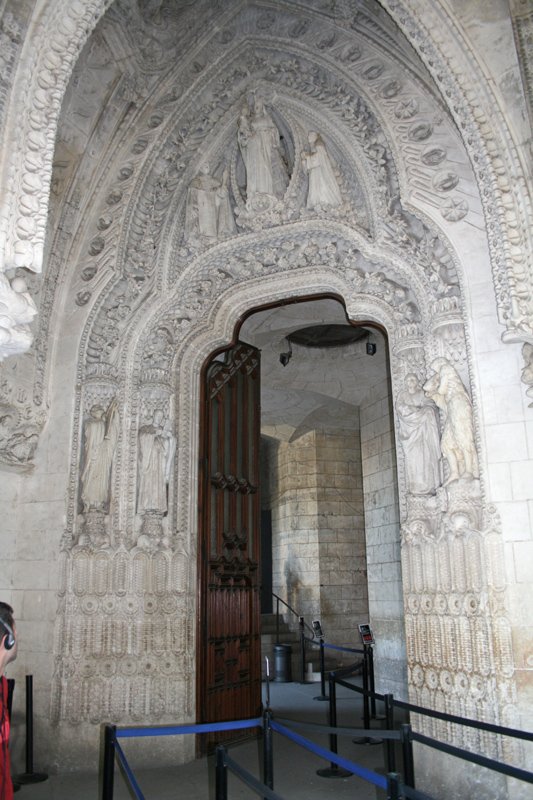
facade of the apse

the facade of the Passion
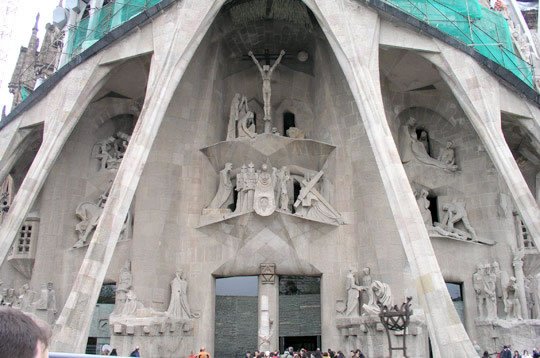
Since 1914, Gaudí has been exclusively dedicated to building the Expiatory Temple of the Sagrada Familia, which explains why there are no other important works in the last years of his life. So much is involved that he arrives to reside in the last few months next to his workshop, a space located next to the apse dedicated to a scale model workshop, making drawings and designs, studying sculptures and space for photographic shots, among others.
model
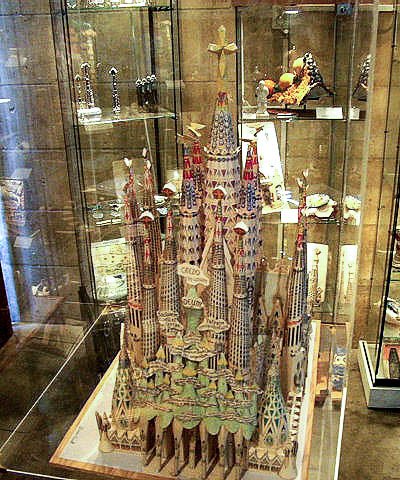
In 1923 it projects the definitive solution of the ships and covers. However, the works move slowly. On November 30, 1925, the construction of the first bell tower on the facade of the Nativity, dedicated to Saint Bernabé, one hundred meters high, was completed. This is the only one that Gaudí sees built, since on June 10, 1926 he died as a result of a tragic accident three days before, when he was hit by a tram. On the 12th he is buried in the Carmen chapel of the crypt of the Expiatory Temple of the Sagrada Familia, where his remains still rest today.
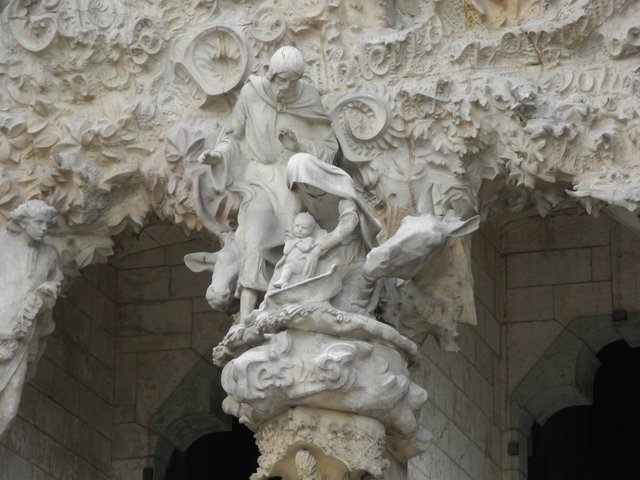
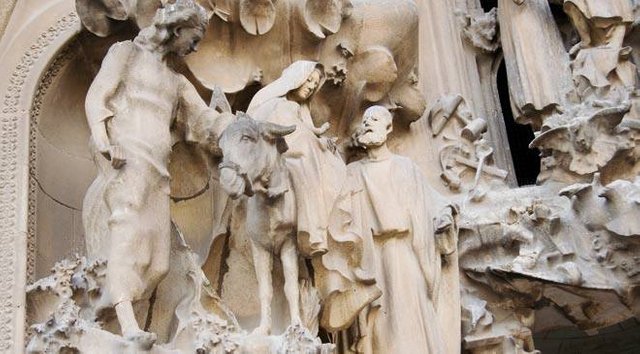
Birth facade
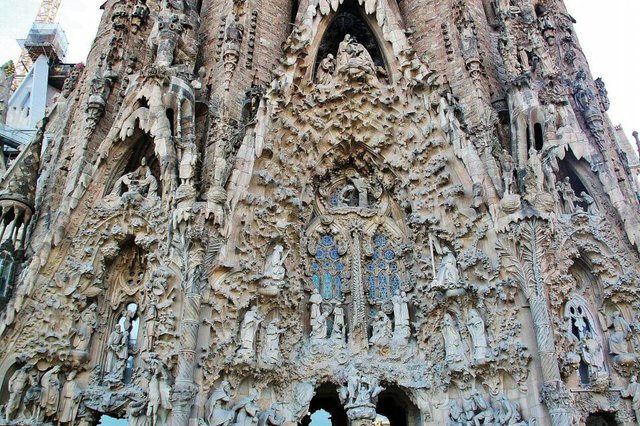
Tomb of Gaudi
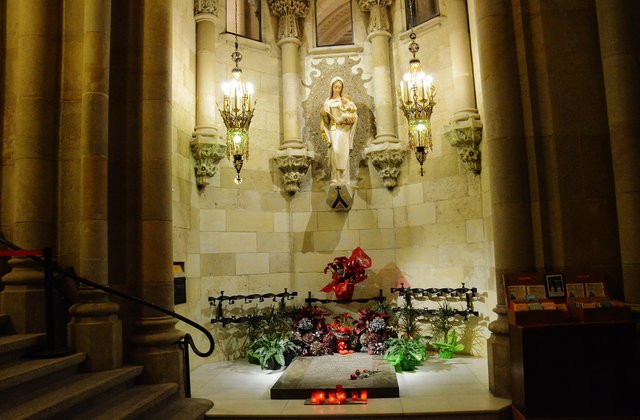
After the death of Gaudi
When Gaudí died, his close collaborator Domènec Sugrañes took over the direction of the works until 1938.
In 1930 the bell towers of the facade of the Nativity are finished and in 1933 the portal of the Faith and the central cypress is finished.
In July 1936, following the military uprising and the Spanish Civil War, revolutionaries set fire to the crypt, burned the Provisional Schools of the Holy Family and destroyed the workshop. At that time the plans, the drawings and the original photographs are lost, and a part of the scale scale models is reduced to shattered. However, it should be noted that since the intervention of Gaudí in 1883 and despite those acts of vandalism, the construction of the temple has not stopped and the will of the original idea of the architect has always been respected.
Portal of Faith
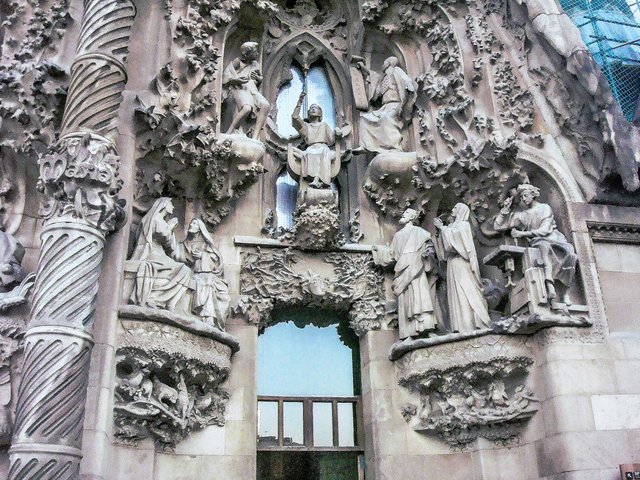
Central cypress
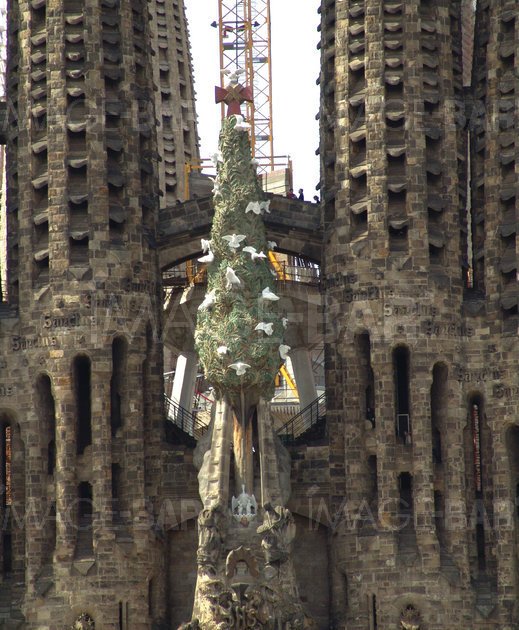
After the Spanish Civil War the construction of the Expiatory Temple of the Sagrada Familia was resumed, which slowly continues to rise. Between 1939 and 1940, the architect Francesc de Paula Quintana i Vidal, a collaborator of Gaudí since 1919, restored the burned crypt and recomposed many of the damaged models, which serve as models to continue the construction according to the original idea of Gaudí.
Then there are directors Isidre Puig-Boada and Lluís Bonet i Garí, also collaborators of Gaudí and people who knew the teacher and who until 1983 directed the work. Subsequently, they were directors Francesc de Paula Cardoner i Blanch, Jordi Bonet i Armengol and Jordi Faulí i Oller, who currently holds the position, since 2012.
In 1952 the XXXV International Eucharistic Congress was celebrated in Barcelona, which is why several acts are held in the temple. That same year, the Nativity staircase was built and the façade was illuminated for the first time, lighting that in 1964 will be permanent at the will of the Barcelona City Council.
The works continue with vigor in 1954; the foundations are started to build the facade of the Passion, based on the multiple studies carried out by Gaudí between 1892 and 1917. After the foundations, the crypt is built, where in 1961 a museum was installed to explain to visitors the aspects historical, technical, artistic and symbolic of the temple. This facade will see the four terminals of its bell towers lifted in 1976.
Crypt
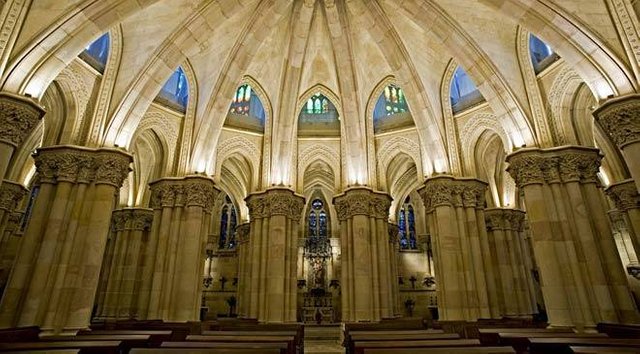
An important date is 1955, when the first "collection" takes place, dedicated to collect funds to pay for the works, an initiative that will be maintained in the following years, until today, as a participatory form of society in the construction of the temple .
Many sculptors have left their mark on the facade of the Nativity. On March 19, 1958, the festivity of San José, the sculptural group that represents the Sagrada Familia is placed, made by Jaume Busquets.
Since 1986, the sculptor Josep Maria Subirachs is responsible for carrying out the sculptural work on the facade of the Passion, which was executed according to his personal style over twenty years.
XXI CENTURY
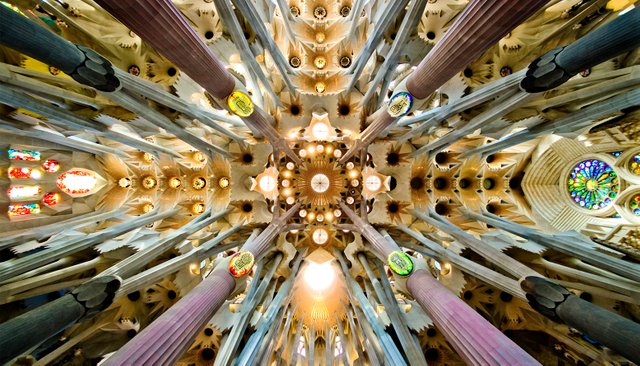
In 2001 the central window of the facade of the Passion is completed and a stained glass window dedicated to the resurrection is placed, work of Joan Vila-Grau. The four columns of the center of the cruise are also completed.

During 2002, the sculptor Josep Maria Subirachs carried out the project of the wall of the patriarchs and prophets that Gaudí placed in the arcade of the facade of the Passion, and in 2005 the sculpture of the Ascension was placed between the towers of this façade. In parallel, the Eucharistic symbols of bread and wine, made by the Japanese sculptor Etsuro Sotoo, are placed in the windows of the central nave.
In 2006, the cantoria of the facade of the Gloria was built according to Gaudí's models. The vaults of the ambulatory of the apse are finished in 2008. Between 2008 and 2010 the vaults of the transept and the apse are finished.
2010 is a significant stage in the history of the Holy Family, with the dedication of the temple by S. S. Benedict XVI.
The work continues
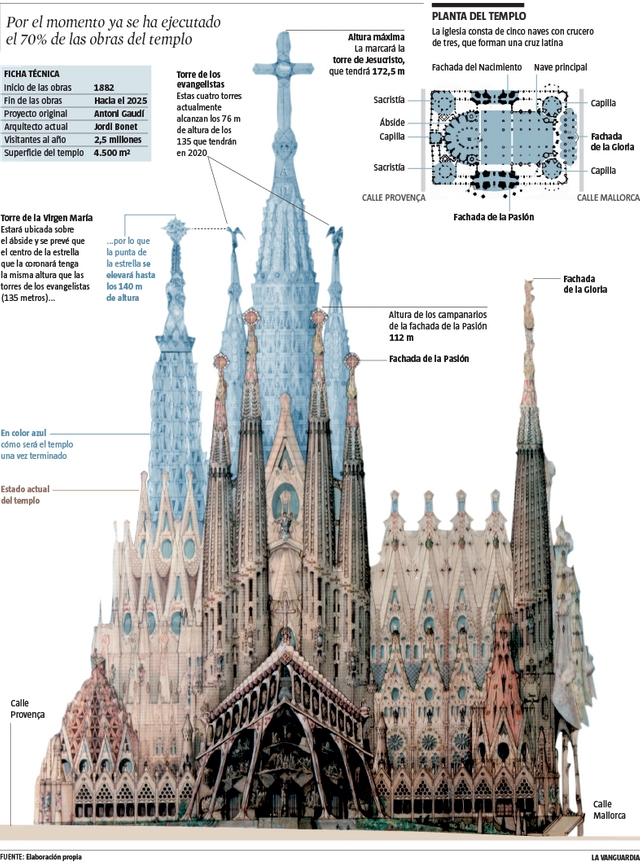
"The temple, as a whole, besides the utility of celebrating the divine worship, will plastically represent the truths of religion and the glorification of God and his saints." A. Gaudí
Virtual view


I hope you enjoy my publication and see you in the next to continue sharing with all of you !!!!!@brianrg13!!
.jpg)
World of Photography Beta V1.0
>Learn more here<
Thank you for participating in #architecturalphotography, the weekly selection will be released on Thursday.
You have earned 5.05 XP for sharing your photo!
Daily photos: 1/2
Daily comments: 0/5
Multiplier: 1.01
Server time: 04:57:02
Total XP: 6.05/100.00
Total Photos: 1
Total comments: 1
Total contest wins: 0
Follow: @photocontests
Join the Discord channel: click!
Play and win SBD: @fairlotto
Developed and sponsored by: @juliank
Excellent!!! follow so friend..
@brianrg13 awesome post with awesome photographs
Thank you!!!
Very nice post, hello from Thailand.
I just opened a new facebook group for original content steemians, maybe you like to join:
https://www.facebook.com/groups/184377172301161/
done
@originalworks
The @OriginalWorks bot has determined this post by @brianrg13 to be original material and upvoted it!
To call @OriginalWorks, simply reply to any post with @originalworks or !originalworks in your message!
superb post.
Este Post ha recibido un Upvote desde la cuenta del King: @dineroconopcion, El cual es un Grupo de Soporte mantenido por 5 personas mas que quieren ayudarte a llegar hacer un Top Autor En Steemit sin tener que invertir en Steem Power. Te Gustaria Ser Parte De Este Projecto?
This Post has been Upvote from the King's Account: @dineroconopcion, It's a Support Group by 5 other people that want to help you be a Top Steemit Author without having to invest into Steem Power. Would You Like To Be Part of this Project?
I'll carefully read this beautiful post! I upvoted
thanks!!